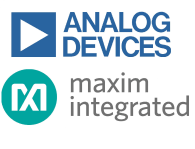Overview
Face Recognition technologies have come a long way from being able to process information only in the cloud.
In fact, moving data processing for Face Recognition closer to the edge of the network results in some incredible benefits for users of this technology.
This article discusses 8 of the most important benefits of Edge Face Recognition. But, before we dive in, let’s discuss what Face Recognition is all about.
Face Recognition explained
Face Recognition technologies fall under the category of biometric security.
Face Recognition can validate/confirm human faces (in videos and images in real-time) by using biometric software to recognize an individual’s facial features and assign them the correct identity based on those findings.
The technology scans, captures and examines several patterns based on specific facial details while comparing them to a host of ‘pre-enrolled’ images. Once you have the image of a person, Face Recognition can pick that person out of a selection of many faces.
This is possible because each individual has unique facial features and variables that allow Face Recognition technologies to identify them from a host of other faces. Some of these include:
- forehead length
- the width and depth of the nose
- eye shape
- cheekbone shape
- the size and shape of the chin
Face Recognition can be deployed using cloud-based or Edge-based solutions (and sometimes a combination of both). While each approach has its advantages, Edge Face Recognition is becoming popular thanks to its improved security, speed, affordability, versatility, and flexibility.
Even though cloud computing is a popular option for Face Recognition tasks, it’s not a perfect solution.
Face Recognition requires tremendous amounts of data, and cloud-based solutions can result in limited applications and significant expenses. On top of this, bandwidth and network availability are always problems that need to be considered for cloud computing.
Additionally, since Face Recognition images need to be transmitted over the internet when utilizing a cloud computing method, there are also privacy and security problems to consider.
Fortunately, the limitations of cloud computing can be addressed by moving computing workloads closer to where data is initially generated.
What is Edge Face Recognition?
Edge Face Recognition is a technology that relies on both Edge computing and Edge AI.
Instead of performing computing processes in cloud data centers that can be thousands of miles away, Edge computing allows processing closer to the source. This processing can even take place on a device (e.g., directly onboard a smart lock or a home security camera system) and doesn’t require an internet connection.
AI, meanwhile, offers the capacity to make incredibly accurate, quick decisions from complex data. Edge AI is essentially AI that utilizes Edge computing to run data locally, thus taking advantage of the benefits Edge computing offers.
In the case of Edge Face Recognition, this means that the power to recognize and process images is embedded, taking place on local devices. This allows devices to run quickly and with extreme precision as they aren’t subject to network-related problems associated with cloud computing.
The 8 major benefits of Face Recognition at the Edge
Edge computing and Edge AI will allow Face Recognition technologies to make the world more convenient, smarter, and safer by changing how machines process information.
Thanks to the advantages afforded by Edge AI and Edge computing, users of Edge Face Recognition systems can enjoy lower operational costs, increased efficacy and usability, and enhanced privacy and security, to list just some of the benefits.
Let’s explore the 8 benefits of Edge Face Recognition in more detail:
1. Edge Face Recognition is cost-effective
AI demands a significant amount of computing power, and biometric AI, such as Face Recognition, is no different. Cloud computing can get expensive, which gives Edge devices a cost advantage over the cloud.
Edge AI chips have also become increasingly inexpensive, widening this cost advantage even more.
2. Edge Face Recognition solutions can process data in milliseconds
Top-tier Face Recognition algorithms can operate in milliseconds, and Edge solutions are best at achieving this as they often outperform cloud-based options.
For instance, in the case of a smart home security camera, the best place for processing to occur is onboard the device itself. Since there’s no latency caused by bandwidth inefficiency or having to send data to the cloud, the camera can be much more responsive.
Speed matters because quick response times are critical in almost all Face Recognition use cases.
3. Edge AI can record footage selectively
Also, one of the benefits of Edge Face Recognition is its detection/activation capabilities.
Traditional Face Recognition processes images and video feeds looking for faces and then quickly sends those findings back to the client. However, this method isn’t ideal as continuously moving images and video around a network uses substantial bandwidth.
On the other hand, with Edge AI, cameras can record selectively, sending only footage that contains faces.
Avoiding the transmission of irrelevant footage reduces the data that a Face Recognition system records and transmits. This translates into lower bandwidth usage and lowers operational expenses than traditional Face Recognition processing.
4. Edge-based Face Recognition offers greater service availability
Imagine if the smart lock to your business or home wasn’t functional after a bad storm or another incident that caused an internet outage. Unfortunately, no internet service is free from occasional interruptions or low-bandwidth problems.
Since Edge Face Recognition doesn’t need an internet connection to operate, it’s unaffected by these issues, making it subject to fewer technical failures.
5. Liveness in Edge AI stops attackers from tricking a biometric system
Edge AI is capable of differentiating between real-life human beings and non-living spoofs.
Face spoofing attacks use 2D and 3D (static or dynamic image and video footage) to fool a Face Recognition system.
To combat this, a security measure known as Presentation Attack Detection (PAD) is used to stop attackers from bypassing Face Recognition software. Migrating PAD to the Edge allows this powerful security measure to integrate increasingly sophisticated multi-sensor technologies while making them easy to deploy and more responsive.
6. Edge AI allows for innovative industrial design options
Edge AI can operate under extreme power constraints, which often afford reduced size and weight.
This lets product designers create innovative Face Recognition design options that better fit environments specific to individual use cases.
7. Edge AI ensures the use of only high-quality images
The quality of submitted face images heavily influences the performance of Face Recognition software.
With Edge AI, image quality can be assessed in real-time.
This ensures that only high-quality images of people’s faces are entered into an Edge Face Recognition device. In some use cases, if a poor quality image is detected, an Edge device can provide instantaneous feedback to a user through a simple notification.
8. Edge Face Recognition lets users’ private information stay private
Face Recognition that relies on Edge computing and Edge AI can process data locally (without sending it to the cloud). As a result, a user’s personally identifiable information stays at the source where it’s generated.
Because data is much more vulnerable to attack during transmission, keeping it within the same location dramatically reduces the chance of information theft.
Edge technologies create opportunities for Face Recognition
Edge technologies are helping to facilitate the adoption of advanced Face Recognition systems, and, as the points above demonstrate, Edge Face Recognition supports and empowers users in several important ways.
On the Edge AI front, Face Recognition technology is undoubtedly fulfilling its promise to make a difference in how machines learn and process information, directly impacting the experiences that Face Recognition systems can deliver.
As we’ve explored, Edge-powered Face Recognition is more user-friendly, cost-effective, and secure, making it a brilliant option for many use cases.
Xailient’s Face Recognition technology is part of this landscape due to its incredible efficiency, accuracy, and speed at the network’s edge.












